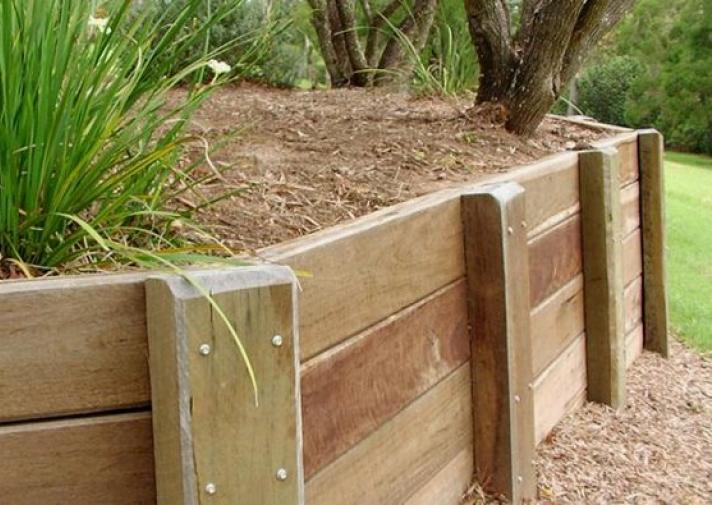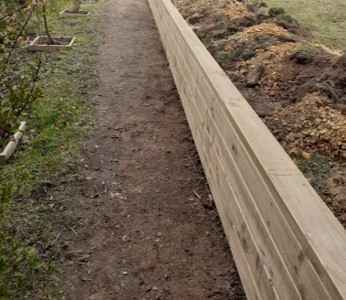Timber retaining walls Auckland
TIMBER RETAINING WALLS
Retaining walls can be used for a number of different purposes: lawns, driveways, paved patios, and paths.
You can choose to have the retaining timber either front fixed or back fixed (in front of the post or behind the post). If you have paving, it’s best to front fix it so you have a straight line to work to rather than working around the posts, but we can advise on the best option. We also use tongue and groove retaining walls (predominantly for front fixed boards) for additional strength.
All our retaining walls are built to take into account good drainage. They are backfilled with scoria and novacoil is used at the base behind the wall (novacoil discourages water from building up and allows it to drain away).
We can build retain walls to hold heavy clay, new topsoil, paving, or concrete. We can even create raised spaces which can withstand the pressure of heavy items (such as cars).
Retaining walls can be painted to match your existing colour scheme (or can be used as bench seats). We can also do hexagonal or octagonal shapes to go around bends and create a smoother finish.
We can also replace or repair damaged timber retaining walls and rebuild them to current standards. We can hand dig where necessary to limit the impact on your existing lawn, or move the wall forward and fill the additional space and reinstate the area as tidily as possible.



